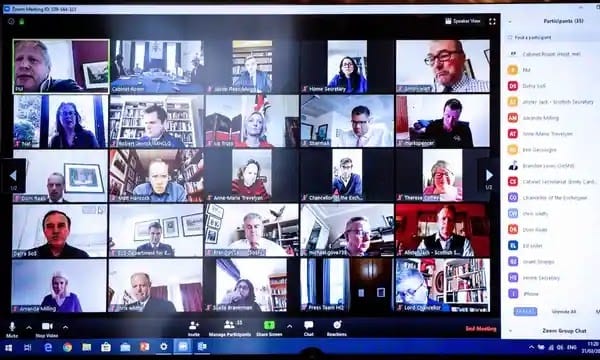
So Covid happened… a lot of things changed, school being one of them. According to the United States Census, about 93% of schools in most areas are now virtual, meaning there aren’t any face-to-face classes being held.
This was a huge adjustment for students and teachers. Imagine going from seeing friends and communicating in school to staring at a computer screen all day.
March 12th, 2020 things went downhill due to Covid-19. Schools shut down. It was very hectic and it wasn’t easy for schools to prepare. In August, the new school year began with Zoom, a virtual meeting place used for work and school. Zoom gives you the ability to use your microphone to speak and turn on your camera. The question is, should students be required to turn on their cameras during class?
Approximately 30% of students turn their cameras on during class. Some schools require students to turn their cameras on. Students may take advantage of the fact that their camera is not on. Doing things like joining the class, then not paying attention to the teacher, and even sleeping!
There is a debate on both sides. Students do need privacy in their own homes, but again they could be slacking and getting bad grades because they aren’t paying attention. Aya Hachem, a teacher, states: “It is definitely tough having to teach a class and be looking at a bunch of black screens. But I understand that everyone’s home is different and there are certain circumstances.”
The Oregon State University for Teaching and Learning conducted a list of pros and cons of requiring students to have their cameras on. The pros: stimulating in-person connection, easier for teachers to identify students by name, creating a sense of connection and accountability. The cons: invasion of privacy, making students feel self-conscious, and feeling the exhaustion from seeing faces all day.
You never know what’s going on in someone’s home, they might need to be taking care of younger siblings and they won’t be comfortable if their cameras are on.
Nadeen Sabra, a student who does online school states, “My home and where I do my school is my privacy, I have two brothers also doing online school and it’s just a lot. It’s easier to keep my camera off. I do understand how it’s more difficult for teachers to teach when they can’t tell where their students are at. Students sometimes don’t answer to attendance, leading to teachers marking them absent because they aren’t paying attention. ”
When students have their cameras on, it’s easier for the teacher to see how the student is reacting to the topic. It shows how engaged they are if they are confused, and how they are following along.
Iman Cheaito has two kids who both do online school. This is her perspective: “Living in a home where my kids are old enough to do their school on their own, I encourage them to turn their cameras on. They have their own desks and working spaces, so why not! Now it’s different when the student has younger siblings, it’s more loud and busy. Teachers probably feel like their students aren’t even there. They probably are drained from looking at those black boxes all day.”
To conclude, there are pros and cons to both sides. I strongly agree with students being able to keep their cameras off… Do you?
Jenna Chour
8th grade
Journalism